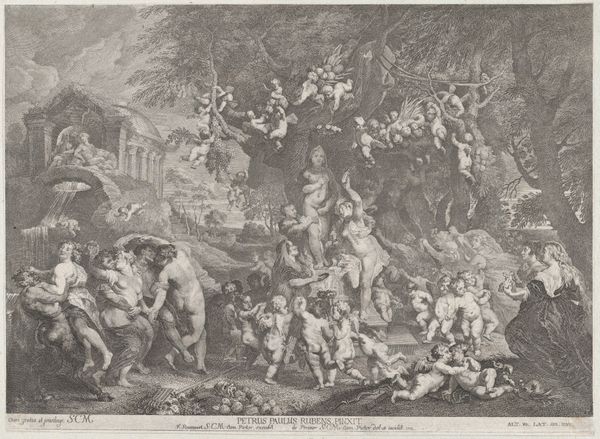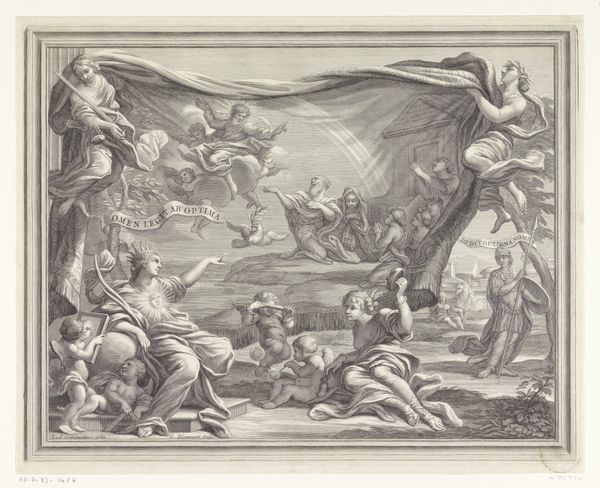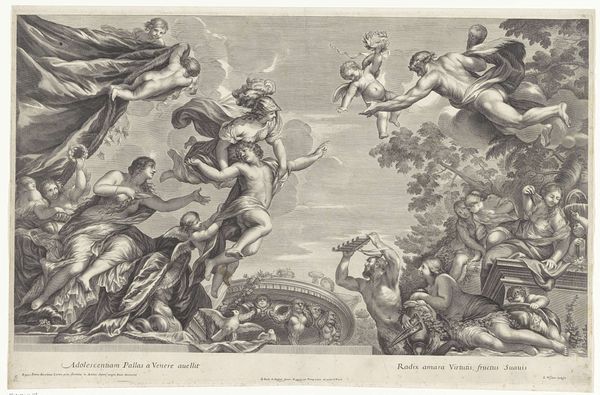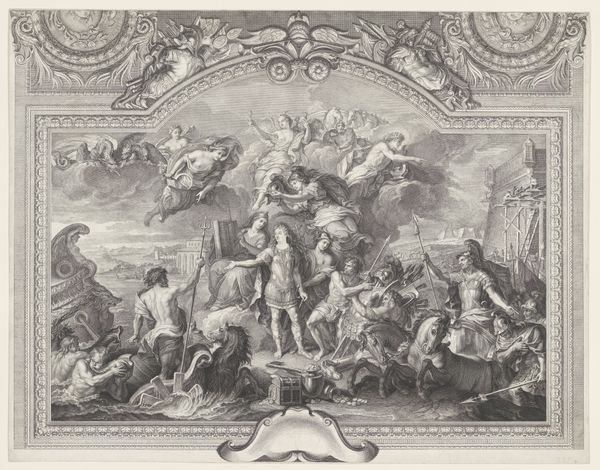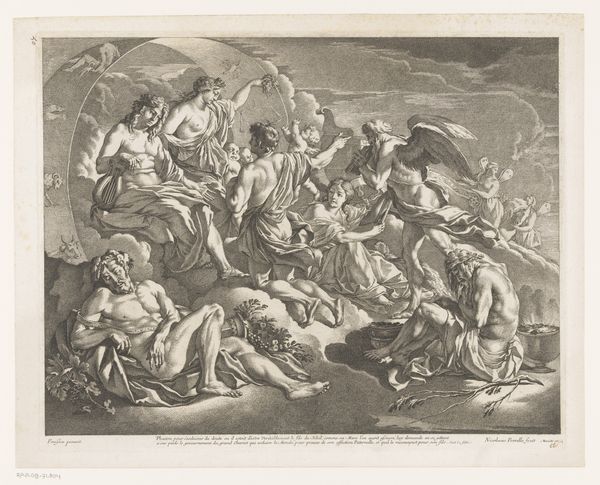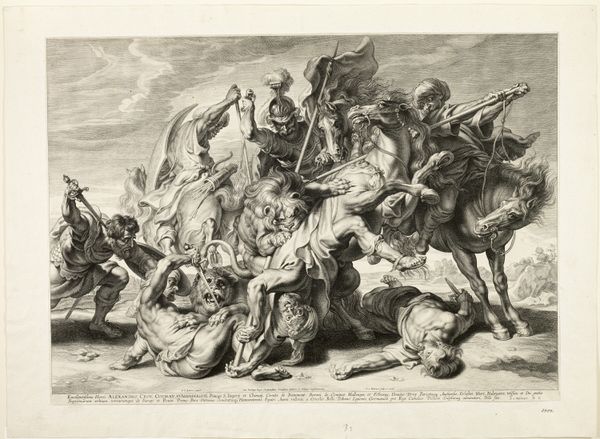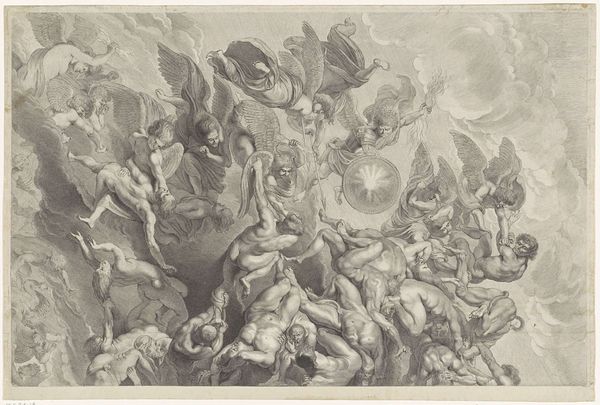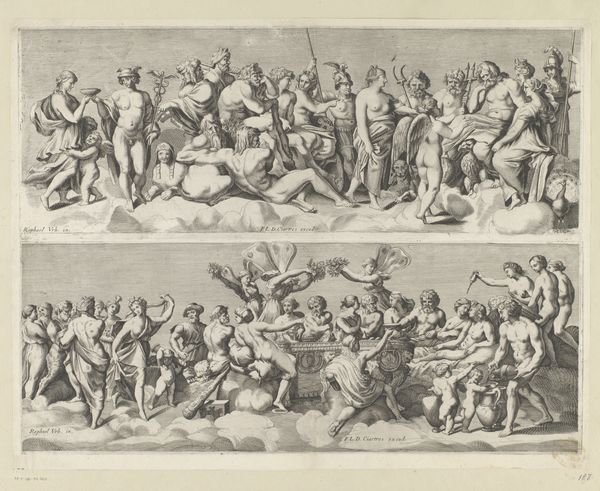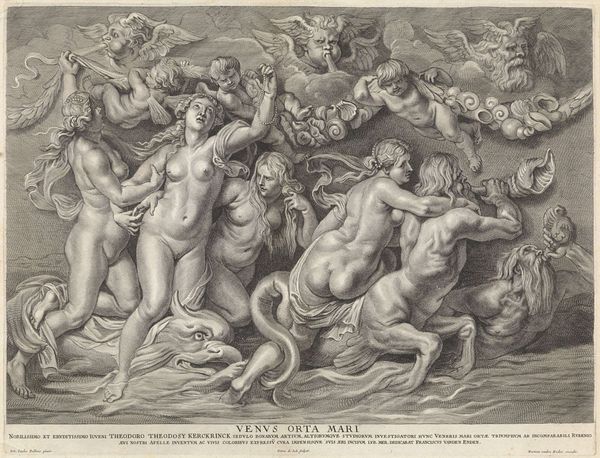
print, engraving
#
baroque
# print
#
landscape
#
figuration
#
mythology
#
history-painting
#
nude
#
engraving
Dimensions: height 496 mm, width 650 mm
Copyright: Rijks Museum: Open Domain
Editor: Here we have "The Triumph of Galatea," an engraving by Jean Pesne, created sometime between 1633 and 1700. The figures are so dynamic; it's as though I am observing pure movement rendered in static form. I am interested to hear about your interpretation of its formal qualities. Curator: The organization of forms in this composition reveals a fascination with curvilinear motifs. Notice how Pesne masterfully uses the engraved line to define forms. Take the billowing drapery above Galatea; each fold contributes to a sense of upward movement that counterbalances the weightiness of the figures below. Editor: That’s a sharp observation. It feels as if every detail propels you to the central figure. Curator: Indeed. The dynamism you mentioned is further amplified by the contrasting textures achieved through varied densities of line work. What do you notice about the depiction of the human form? Editor: There seems to be an emphasis on musculature, with these figures idealized according to classical canons, creating a heroic and almost theatrical effect. Curator: Precisely. This idealized representation reinforces the symbolic function of the figures. And note the meticulous rendering of light and shadow; each contributes to the spatial depth, lending a sculptural quality to the otherwise two-dimensional medium. Do you think these qualities enhance the overall meaning? Editor: It highlights the artistic skill of Pesne as an engraver. I also notice a clear engagement with semiotic codes of ideal beauty of the era. I learned to appreciate art using pure visual expression today. Curator: And I hope I broadened your horizon in discussing formal qualities in addition to signs, as each informs the other.
Comments
No comments
Be the first to comment and join the conversation on the ultimate creative platform.

